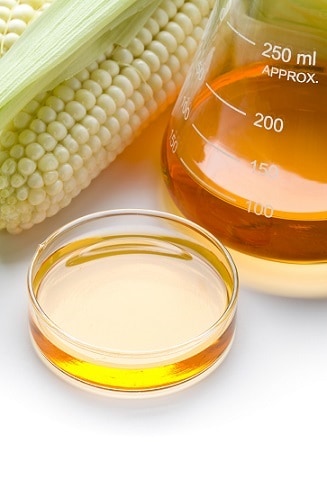 If you want any chance of clearing acne at all, let alone getting a skin tone which makes passersby think that you’re surely not human, the main processed food additives to eliminate are obvious.
If you want any chance of clearing acne at all, let alone getting a skin tone which makes passersby think that you’re surely not human, the main processed food additives to eliminate are obvious.
There’s sugar, a sweetener so seductive for customers that it’s worked its way into wholewheat bread. There’s soybean oil and its best friends canola oil and sunflower oil, the fats of choice for fried fish shops and pizza joints worldwide. Then of course there’s trans-fats, cleverly disguised as partially hydrogenated vegetable oil, a deformed fat worthy of Dr Frankenstein which the human body cannot understand.
These are the main villains which you have to avoid, but it doesn’t end there. Your average fast food burger resembles chemical warfare more than a wholesome meal. A typical fast food bun contains chemicals used to make gym shoes and yoga mats. Chicken nuggets are sometimes only 50% chicken, with corn derivatives, sugar, soy protein and flavour enhancers comprising the rest. Think a burger is simply a bun and beef, with maybe some lettuce? Wrong: there could be over 20 ingredients. Pork products advertised as succulent meat may contain nothing but restructured, discarded, mashed innards and castoffs.
Such are the chemical preservatives that a processed burger bun can remain mould-free for years. A processed slice of cheese may never be removed from a sidewalk from the moment it melts there.
That’s why a reminder of the horrors of processed foods is well overdue, and here it is. Here are 7 lesser known additives which the food industry adores. They may cause acne or they may not, but all are designed to reduce costs or enhance customer appeal, and not to enhance your health.
Not every ingredient with a weird sounding name will damage your health; beta-carotene is one example. From now on though, avoid the following ingredients:
One – Artificial Food Dyes (Yellow 5#, Red 40#, Blue 2#…)
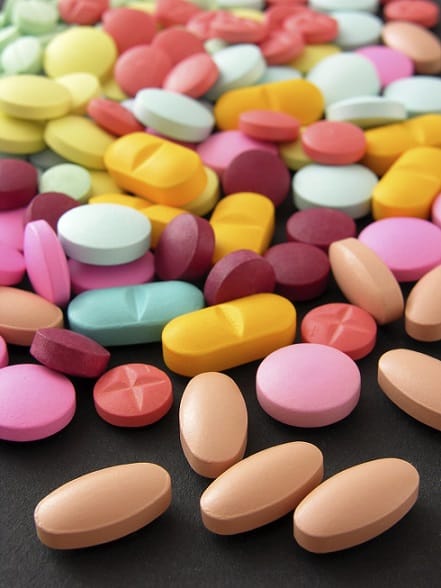 Our first villain is hiding in plain sight – it’s the chemicals which make neon-coloured yogurts, cereals, cupcakes, cheeses and cheese puffs stand out.
Our first villain is hiding in plain sight – it’s the chemicals which make neon-coloured yogurts, cereals, cupcakes, cheeses and cheese puffs stand out.
Food dyes are only added to attract children and make foods seem more fun, but the FDA has already banned several. The legal blue 1# and blue#2 have been loosely linked to cancer in animal studies; you can find it in cake and candy. Yellow 5# and yellow 6# (cereals, chips) are banned in Norway due to causing hyperactivity in children.
The single most common food dye in America is red 40#, from chocolate cake, cereals and fruits snacks, which is again linked to hyperactivity and may accelerate tumour formation. Red 40# is even added to some cherries, in case they weren’t red and shiny enough.
The normal American eats 5 times as many food dyes compared to 60 years ago. According to one estimate, manufacturers pour 15 million pounds of artificial dyes into processed foods every year. All the while, diseases like cancer and dementia steadily increase.
Never forget that food dyes are manufactured from petroleum! Chemicals are used to make the dyes, like benzidine, a carcinogenic substance which isn’t found in nature. The FDA has tested food dyes for free benzidine and declared the levels to be safe, but hasn’t tested for bound benzidine, which can be released during digestion.
Read Annihilate Your Acne – learn to prevent acne and stop just treating it!
Meanwhile, a particularly controversial dye is caramel colouring, used in soft drinks. Why? Because the manufacturing process creates methylimidazole (4-MeI), a by product which the International Agency for Research on Cancer determined to be “possibly carcinogenic to humans” in 2011.
Additionally, both kids and adults rarely eat these dyes in isolation; cereals and cupcakes can flood your body with yellow 5, blue 1, yellow 6, and red 40 in one blow.
While not outright banned in the UK and EU, artificial food dyes must be labelled specifically, and often with warnings detailing their risks towards children. Health scares have led to campaigns to ban them altogether in various countries. Consequently, natural colours like beta carotene are much more common in the UK.
As for causing acne, there’s no direct evidence, but the reports of tumours and carcinogenic byproducts indicate that antioxidant depletion could be at play, alongside increased free radical activity. This was confirmed by studies where food dyes lowered levels of two key antioxidants in rats: glutathione and superoxide dismutase.
Two – Azodicarbonamide
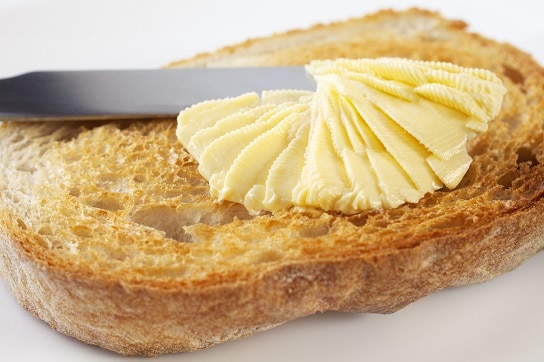 Do you enjoy the lightness and fluffiness of commercial bakery goods? Azodicarbonamide makes it possible; it’s a flour bleaching and improving agent which relaxes dough during large scale division in the factories, maintaining a good texture despite the intensive process. Ascorbic acid (vitamin C) is also used in limited amounts but tends to tighten the dough.
Do you enjoy the lightness and fluffiness of commercial bakery goods? Azodicarbonamide makes it possible; it’s a flour bleaching and improving agent which relaxes dough during large scale division in the factories, maintaining a good texture despite the intensive process. Ascorbic acid (vitamin C) is also used in limited amounts but tends to tighten the dough.
Azodicarbonamide became well known a few years ago as the sandwich staple which is also found in gym shoes, yoga mats, and synthetic leather. You can find the chemical in hundreds of supermarket products, but the problem? Azodicarbonamide has been identified as a respiratory sensitizer, and must be accompanied by the words “may cause sensitization by inhalation” in the UK.
Not only is azodicarbonamide banned in the EU as a food ingredient, but it’s banned from any food packaging which comes in contact with the food. Like food dyes, byproducts pose a threat: baking dough with azodicarbonamide creates ethyl carbamate (also called urethane), a recognised carcinogen.
You won’t find azodicarbonamide in Singapore, for companies face 15 years in jail and a $450,000 fine if they include it. In America, you can find this yellow to orange powder in supposedly healthy foods like ceasar salad and light wheat bread.
It’s also important to note that fast food chains have European formulas for the exact products which don’t include azodicarbonamide, yet taste and feel nearly identical. Azodicarbonamide is both risky and unnecessary. The controversy rages on to this day; there was a big campaign against Subway’s usage of azodicarbonamide in 2014, and the sandwich chain promised to remove it, but the chemical clings on nationwide.
The top 6 vitamins and minerals for clearing acne forever
Does it cause acne? There’s no direct evidence, but ethyl carbamate is known to deplete glutathione levels. Other less researched byproducts of the azodicarbonamide baking process could do the same, or trigger an inflammatory response by the immune system.
Three – Brominated Vegetable Oil
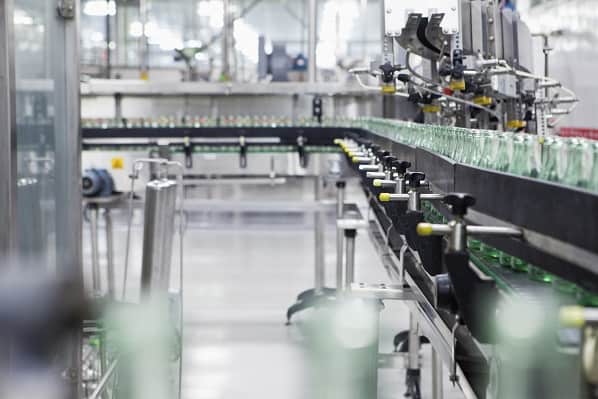 Another chemical which is banned as a food ingredient in the EU and Japan, yet clinging on in the USA. Don’t be confused with the vegetable oils like soybean oil which I criticise on this website: BVO is vegetable oil molecularly bound to bromine, and this transforms its properties. Specifically, brominated vegetable oil prevents flavourings in soft drinks from separating and floating to the top of the can, making the drink’s taste completely consistent.
Another chemical which is banned as a food ingredient in the EU and Japan, yet clinging on in the USA. Don’t be confused with the vegetable oils like soybean oil which I criticise on this website: BVO is vegetable oil molecularly bound to bromine, and this transforms its properties. Specifically, brominated vegetable oil prevents flavourings in soft drinks from separating and floating to the top of the can, making the drink’s taste completely consistent.
The problem? The FDA deems BVO to be safe, but the original studies were thin and performed in the 1970s. What’s more, the chemical bromine is a serious toxin and is linked to organic damage, hearing loss, birth defects, and displacement of healthy iodine.
In 1997, a man was rushed into the emergency room suffering from woes like memory loss, severely weakened muscle coordination, headaches and fatigue. After testing, the doctors quickly detected a major anomaly in the guy’s body: sky high levels of bloodstream bromine. Why? The man had an affinity for soda, confessing to drinking 2 to 4 liters per day. Fortunately, the story had a happy ending, with the man recovering once he eliminated the BVO.
Similarly, in 2003, a man developed swollen and oozing hands, and doctors discovered blood bromine levels twice above safe levels (which may be too high anyway). The man had achieved the skin condition called bromoderma, achieved by drinking 8 gallons of the soft drink Ruby Red Squirt daily. He too recovered once he switched to a healthier beverage.
Recommended – the 7 greatest natural topical treatments for acne
It’s stories like this which led Coke and Pepsi to promise to remove brominated vegetable oil. Like azodicarbonamide and fast food chains, the same products exist in Europe without BVO and without any discernible difference.
Remember that brominated vegetable is a flame retardant originally found in rocket fuel, and was once found in 10% of all US sodas. It’s pretty likely that you’re not drinking gallons of soda every day, but the subtle build up of bromine can be a nightmare; that’s why the dough texturing chemical potassium bromate is also banned in the EU and Japan (but not the USA).
Four – Diacetyl
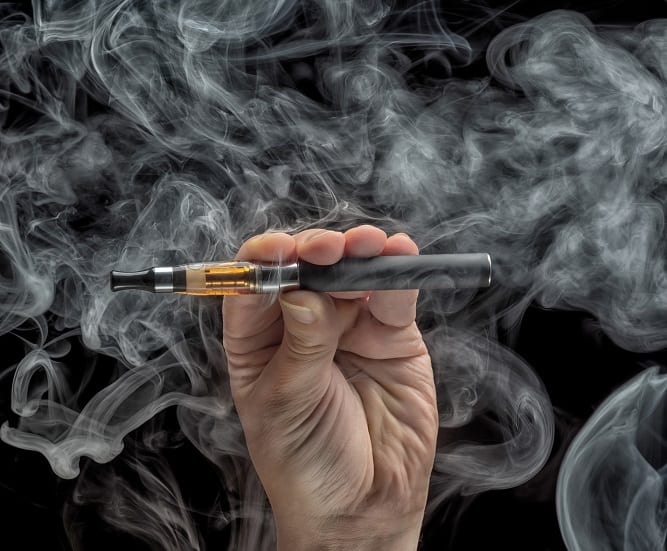 Diacetyl is one of the most beloved and appreciated artificial flavourings in the food industry. Why? Because like ethyl butyrate, which resembles oranges, diacetyl tastes very close to butter.
Diacetyl is one of the most beloved and appreciated artificial flavourings in the food industry. Why? Because like ethyl butyrate, which resembles oranges, diacetyl tastes very close to butter.
This magic comes with a curse though, for diacetyl is the villain behind popcorn lung, a condition suffered by workers in microwaved popcorn factories where diacetyl is handled on a daily basis.
More worryingly, diacetyl is linked to increased formation and stubbornness of amyloid plagues, the brain lesions which are closely correlated with Alzheimer’s disease. Disturbingly, diacetyl can alter gene expression in the brain, and not by turning you into the next Einstein. Diacetyl can even pass through the brain blood barrier.
Originally, diacetyl was a fermentation byproduct of beer and vinegar, when one day a food industry big shot must have dipped his finger in, licked it and realised the amazing potential, but nowadays diacetyl is a synthetic chemical, a green to yellow liquid in its pure form. Because of protests from factory workers, diacetyl has been replaced with 2,3-pentanedione in some quarters, which has a similar buttery flavour and aroma, but strangely similar problems.
How common is diacetyl? Moderately common, since you can find it in margarine, other artificial butters, microwave popcorn, and also e-cigarettes. Popcorn has another villain too: perfluoroalkyls, which prevent grease from percolating through the packaging paper, but are linked to reproductive issues.
In the past on this website, we’ve constantly discussed the strange rise of chemical contaminants in foods, comsetics and tap water, and chronic diseases like Alzheimer’s at the exact same time. There’s no way that diacetyl achieved this feat single-handedly, but it’s a telling piece of evidence.
Five – Synthetic Parabens
 These chemicals are most notorious for their infiltration of shampoos, makeup and other cosmetics, and because of that reputation, their role in processed food has been eclipsed somewhat.
These chemicals are most notorious for their infiltration of shampoos, makeup and other cosmetics, and because of that reputation, their role in processed food has been eclipsed somewhat.
Parabens are subtle, but their dangers are not to be underestimated. Their goal is to suppress microorganisms, including yeasts, bacteria, and mould, and they do it well. But parabens are also believed to damage the reproductive system after multiple daily exposures, with evidence supplied by studies on rats.
Propyl paraben, for example, has mild estrogenic activity, impairing fertility in women and ruining sperm counts and testosterone levels. Butyl paraben is able to increase lipid peroxide formation in the bloodstream while decreasing glutathione formation, and parabens as a whole are linked to increased allergy rates. Propyl paraben is also known as E216 while butyl paraben has no e-number; ethyl paraben is E214.
Unlike azocarbonamide, the EU hasn’t banned parabens, but propyl paraben has stumbled in the SIN list, which stands for Substitute It Now; European scientists are disturbed enough that food and cosmetics companies need to find a replacement quickly. Parabens are much more common than brominated vegetable oil; a study once found that 91% of Americans have parabens in their urine. Some foods which contain parabens as preservatives include processed fish, beer, sauces and muffins.
Compared to BPA or fluoride, parabens are fairly weak in isolation, but with pesticides in food, phthalates in packaging, and all sorts of things in tap water, the more chemical contaminants you can eliminate the better.
Six – BHA/BHT
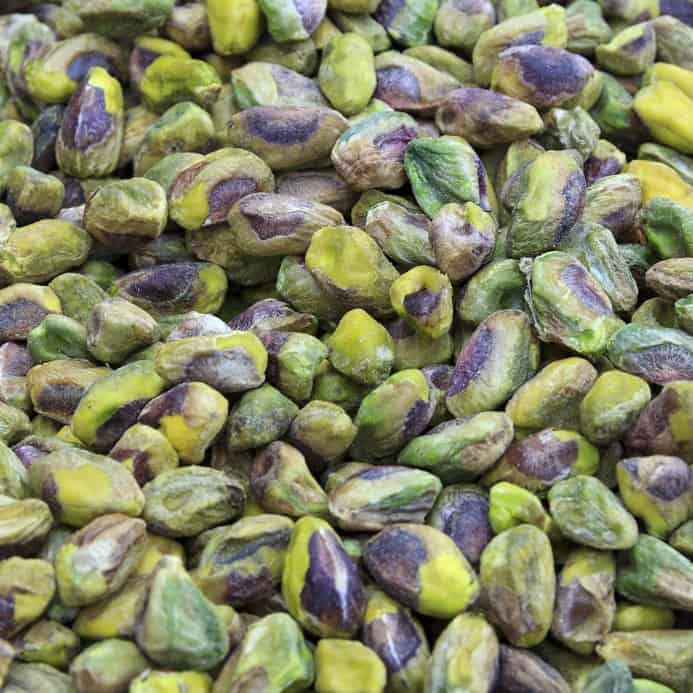 A pair of artificial, petroleum derived antioxidants used to preserve oils and fats in processed food. You can find BHA and BHT in cookies, lard, margarine, crackers and even nuts; this structurally related duo has been around since the 1950s.
A pair of artificial, petroleum derived antioxidants used to preserve oils and fats in processed food. You can find BHA and BHT in cookies, lard, margarine, crackers and even nuts; this structurally related duo has been around since the 1950s.
While both chemicals are legal in the USA, here’s a few points: firstly, it’s illegal to include BHA and BHT in food which is specifically targeted towards young children. Secondly, both chemicals are banned in parts of the EU and Japan for being unsafe in food.
Finally, even the US Department of Health and Human Services says that BHA is “reasonably anticipated to be a human carcinogen”. You would expect an antioxidant to have health benefits, but BHA/BHT are very different to quercetin in apples or carotenoid from carrots. Studies suggest that they cause cancer in animals, thyroid changes and neurological problems. Of the two, BHA is the worst according to studies. The international cancer agency classes BHA as a possible human carcinogen.
Why zinc supplements can reduce acne by 49.8%
Yet despite the fears, both BHA and BHT have generally recognised as safe status in the USA. You can still find them in your local supermarket and they could be on your shelf or in your body right now. Interestingly, aside from their own toxic effects, the mere presence of BHA in processed food is a warning, because that food is probably rancid and unstable and therefore swimming with acne-causing free radicals; the usage of BHA in factory produced margarine is a classic example.
The biggest advantage with BHA and BHT is that unlike sneakier additives, they absolutely must be listed on processed food labels and therefore your quest to avoid them will be fairly easy.
Seven – Propyl Gallate
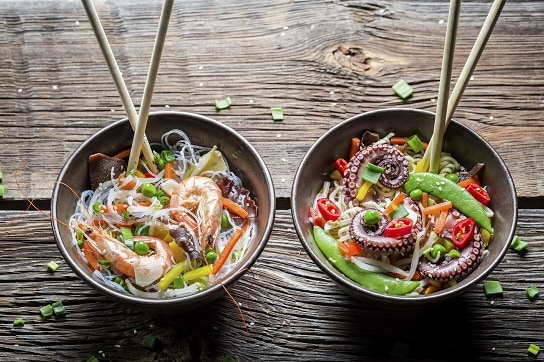 Probably the least common additive listed here, but still one you could unwittingly pick off a shelf.
Probably the least common additive listed here, but still one you could unwittingly pick off a shelf.
Propyl gallate is a white crystalline powder in its pure state; it’s a synthetic antioxidant, used to prevent oils in processed foods from spoiling. It doesn’t necessarily appear in downright fatty foods though: sources are microwaveable popcorn, soup mixes, chewing gum, meat products, mayonnaise and frozen meals.
The downside? In 2014, the European Food Safety Authority concluded that the founding studies for propyl gallate’s safe status were thin and outdated at best. Like food dyes, propyl gallate has been linked to accelerated tumour formation in animals; like propyl paraben, propyl gallate may have estrogenic activity in the body.
Sea buckthorn oil – a topical treatment which lowers oily skin by 45%
Soup mixes like chicken stock are a huge source of propyl gallate, not to mention MSG, caramel colouring, and corn protein in one inflammatory batch. Interestingly, many of these soup mixes contain powered celery, powered onions and powdered garlic and have a shining reputation as healthy, but these additives spoil the party.
Compared to food dyes or BPA, the evidence against propyl gallate is much less overwhelming, but I can recommend caution with no second thought.
Conclusion
Your average American who mostly lives off processed foods probably eats every one of these additives over the course of a week. As for you, if you’re following the acne-friendly strategy of avoiding most processed foods already, you’ll be avoiding these additives already.
Let these seven examples be a reminder of the dangers that lurk in processed food. The main villains are vegetable oils, sugar, trans-fats and MSG, but there’s an endless world of shadowy side characters too.
Whenever a chemical gets banned, a new one pops up to take its place. It happened with the A-lister additive BPA, which became BPS, it happened with diacetyl, which is becoming 2,3-pentanedione.
While one chemical may be safe in one low dosage, the problem is when you eat that chemical every day, and when you unknowingly consume dozens more chemicals and contaminants which combine with it.
All in all, do not let your guard down when it comes to processed food. As a rule, if you want to put your feet up and mindlessly eat processed food for a treat weekend, you’ll be much safer in Europe than in the USA: the elimination of food dyes is one clear example of why.
The perfect example of a processed food is some organic milk chocolate: yes, it’s sugary, but that’s the only unhealthy additive and you know exactly what you’re getting. Or an organic fruit based yoghurt, which will have some condensed organic fruit powder and some organic cane sugar as a sweetener. Again, if the product is reputable, you’ll know exactly what you’re getting and you can have a controlled treat without any fear of unlisted or unidentifiable chemicals.
NEXT: read the 167 page eBook and get the ultimate diet for acne
Thanks for reading!
